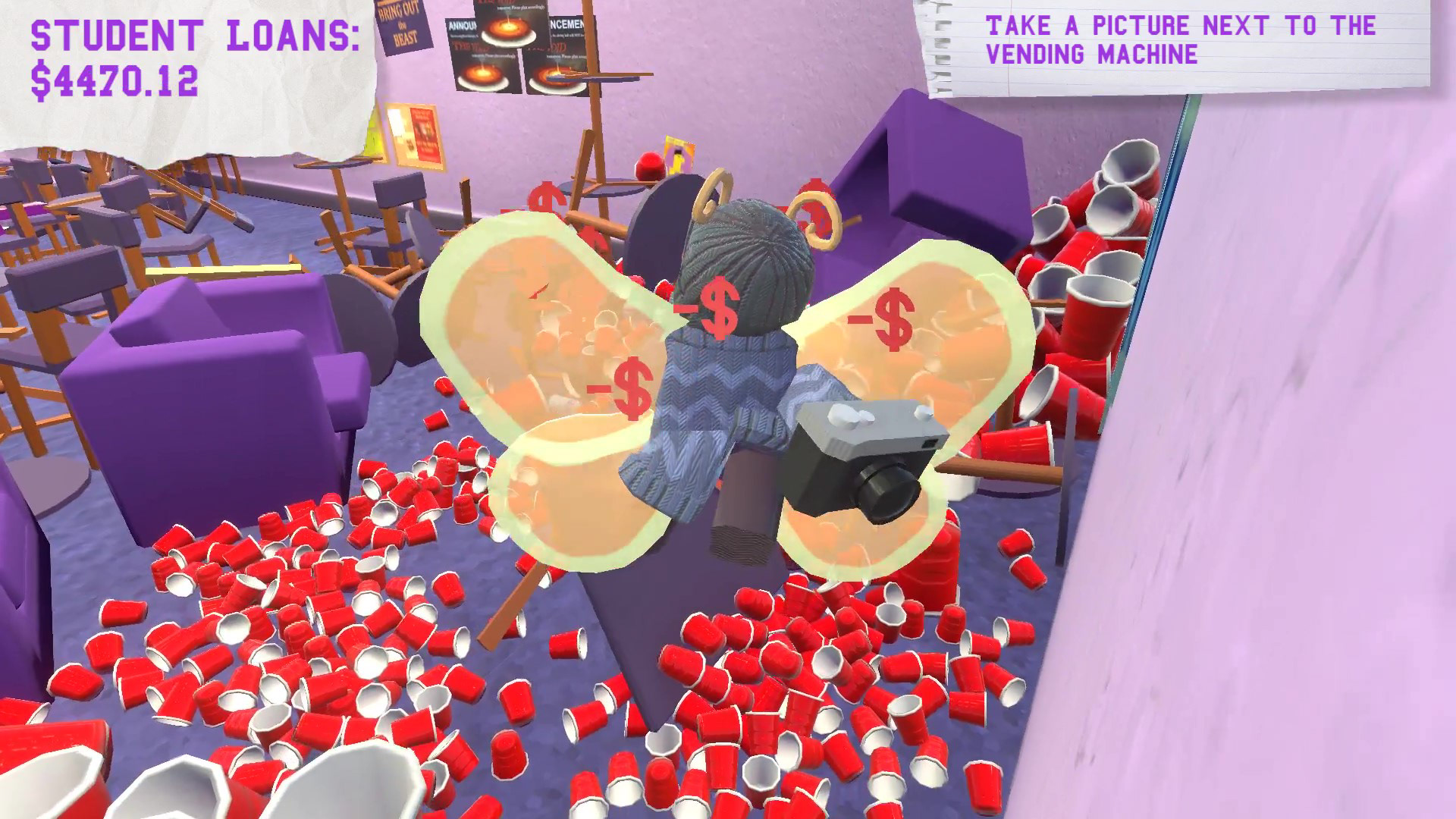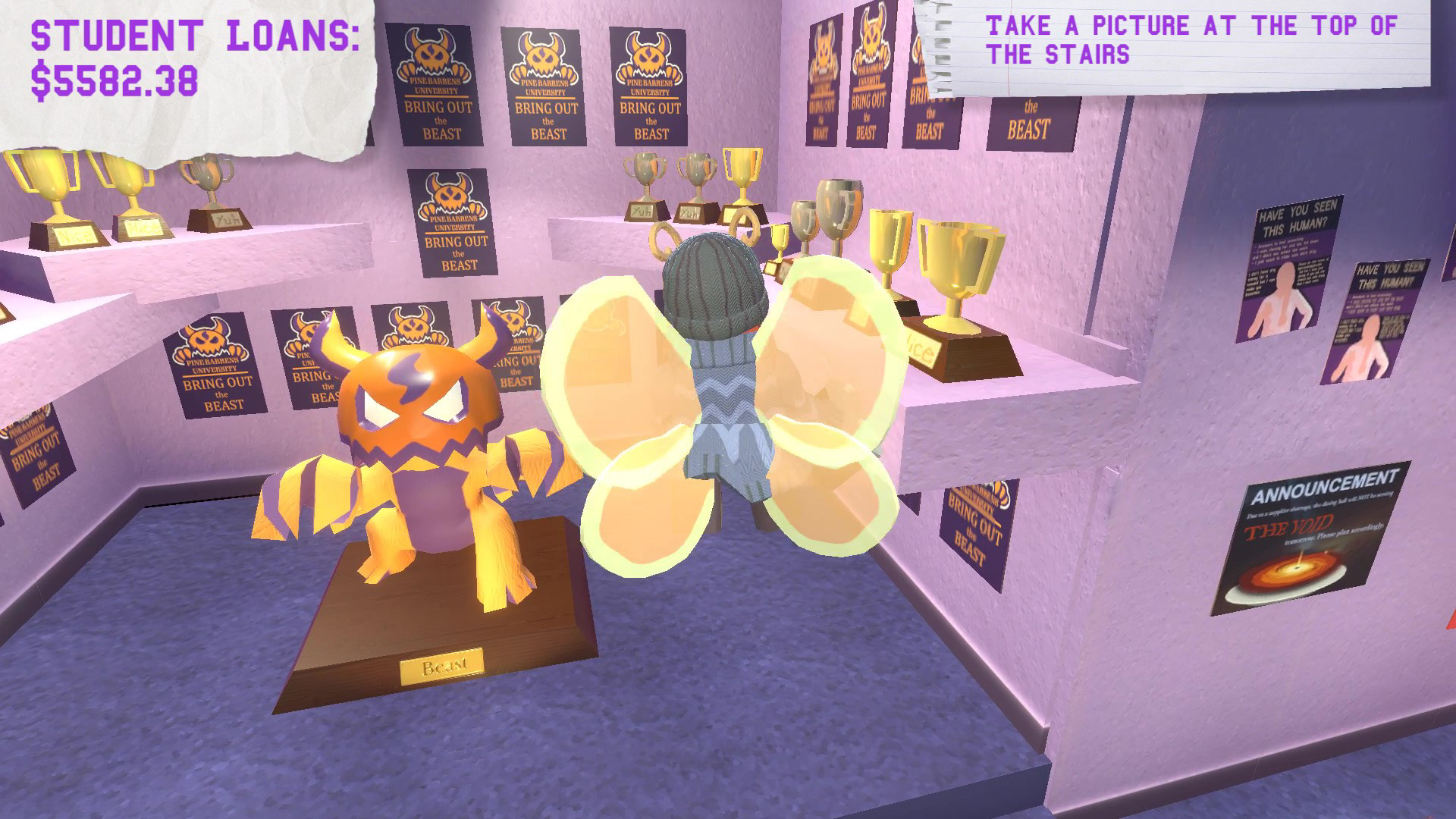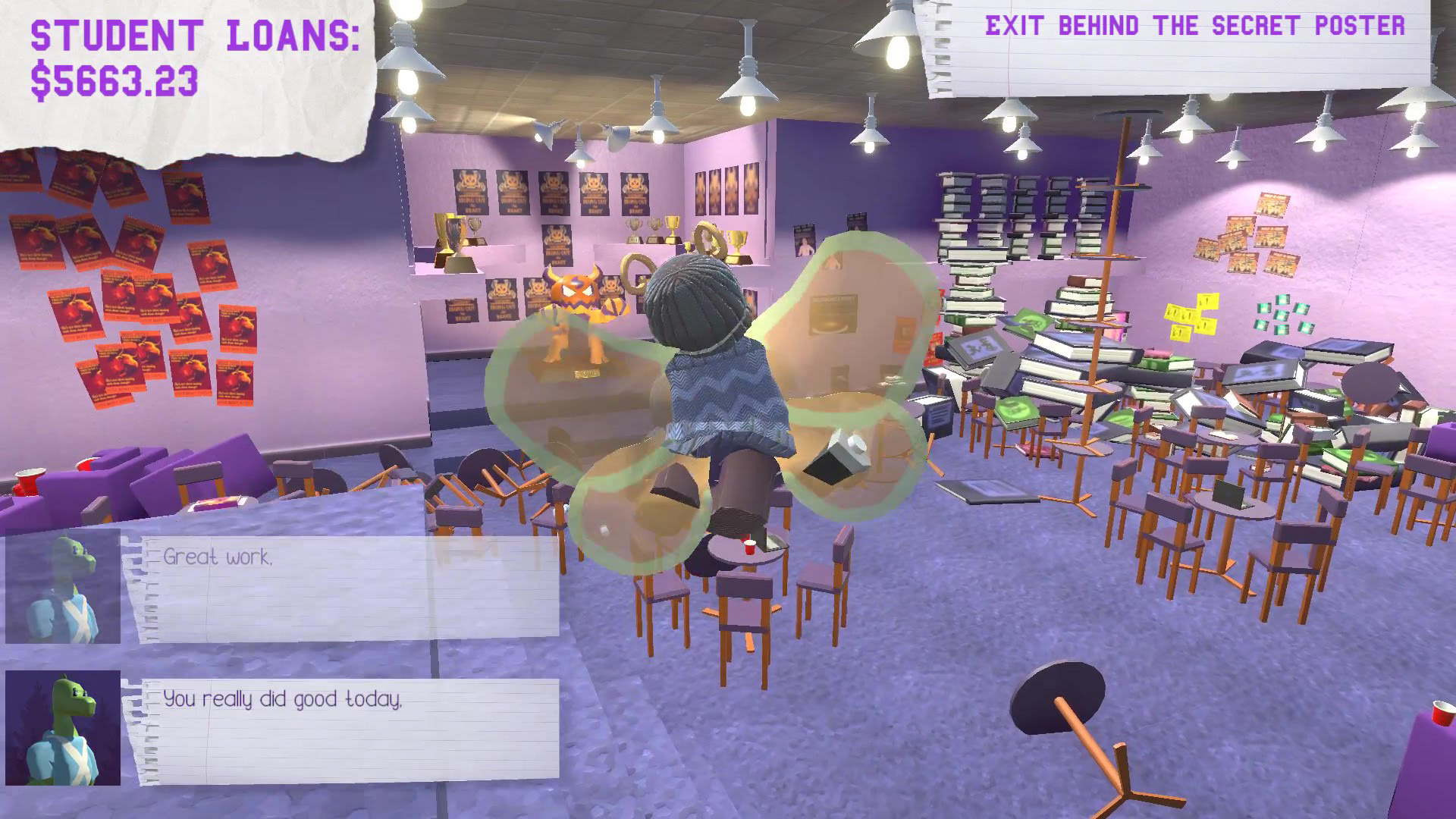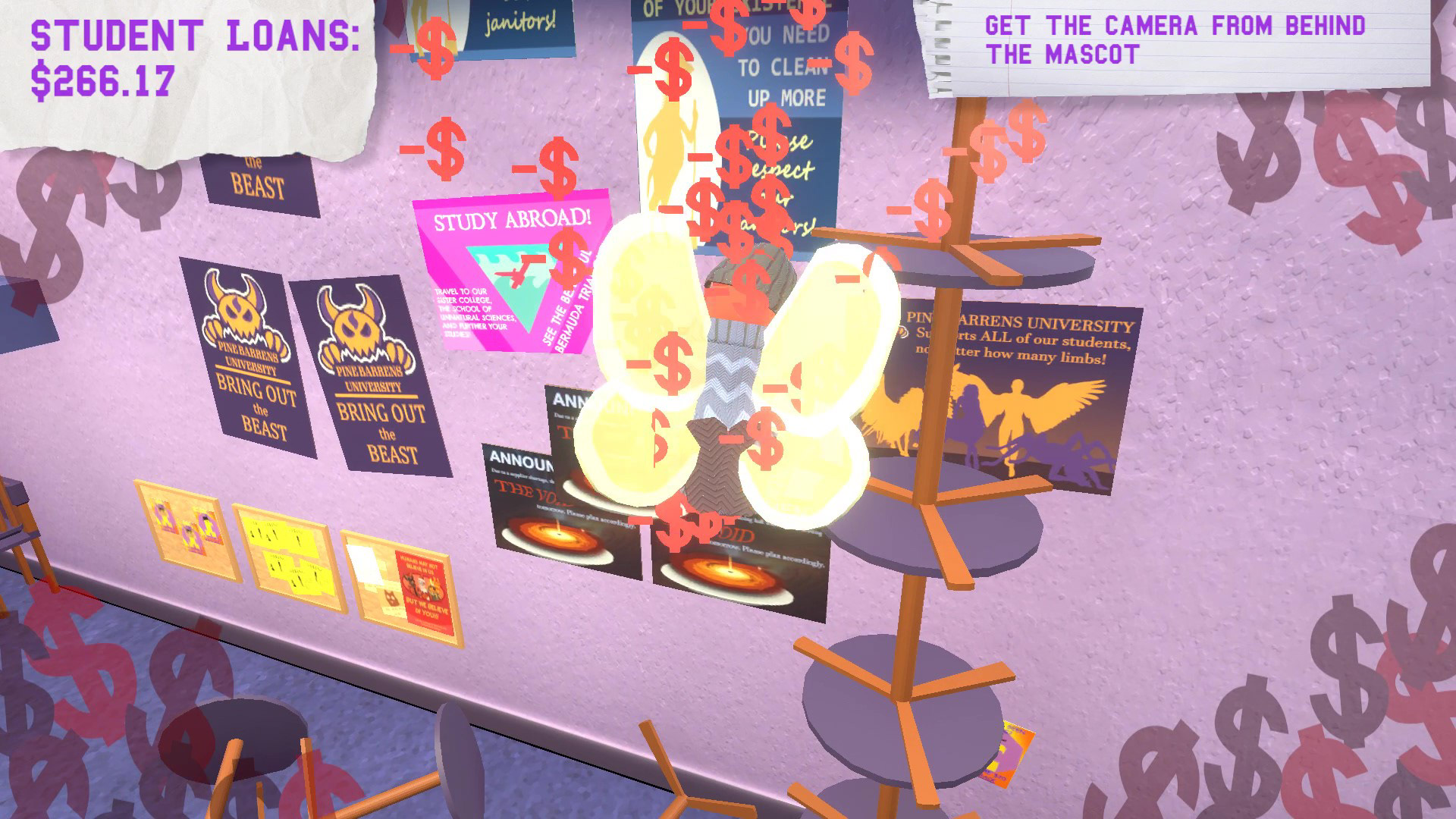




Development Info
Role: Producer, Designer, Lead Artist
Tools Used: Unity, Autodesk Maya, Substance Painter, Adobe Photoshop, Adobe Premiere Pro, Github, Reaper, FL Studio
Duration: August 2018 - April 2020
Team Size: 3
Tools Used: Unity, Autodesk Maya, Substance Painter, Adobe Photoshop, Adobe Premiere Pro, Github, Reaper, FL Studio
Duration: August 2018 - April 2020
Team Size: 3
Game Info
Genre: Physics-based Puzzle Game
Platform: PC
Project Status: Released February 27th, 2020
Platform: PC
Project Status: Released February 27th, 2020
Game Description: Play as Mothman at a college for monsters with a cruel and unusual financial aid plan. Team up with the Loch Ness Monster to steal the school's mascot in the ultimate act of revenge, but try not to drown in student loans!
Team Responsibilities
- Designed game levels & mechanics
- Directed team meetings
- Kept track of major & week-to-week deadlines
- Designed and created a modular building kit to streamline level creation
- Collaborated with teammates to write the game's story
- Concepted, modeled, and textured characters and background objects
- Rigged and animated characters
- Organized and managed play sessions and reviewed results with the team
- Set up and managed the store's Steam page
- Directed and iterated the artistic theming of the game
- Created and implemented UI assets
- Coded a customizable dialogue system and modular objective system
- Created promotional artwork and trailers for the game
- Composed music for the game
- Directed team meetings
- Kept track of major & week-to-week deadlines
- Designed and created a modular building kit to streamline level creation
- Collaborated with teammates to write the game's story
- Concepted, modeled, and textured characters and background objects
- Rigged and animated characters
- Organized and managed play sessions and reviewed results with the team
- Set up and managed the store's Steam page
- Directed and iterated the artistic theming of the game
- Created and implemented UI assets
- Coded a customizable dialogue system and modular objective system
- Created promotional artwork and trailers for the game
- Composed music for the game
Lessons Learned
- Stick to your schedule and milestones as much as possible.
Because this game was developed during the team's spare time, we weren't especially strict about scheduling. As a result, development stuttered midway through the game. Without a clear schedule, it was difficult to maintain momentum. Development became much easier toward the end of production, when we finally hammered out a realistic schedule.
- Playtest and seek outside feedback early and often. A core element of our game was its unique and intentionally challenging control scheme. As the devs, we got used to the controls pretty quickly, so frequently getting fresh faces to try it out made sure we were moving in the right direction.
- Sometimes you have to be flexible to keep things moving forward. Outside commitments meant that for a long stretch of time, some teammates weren't able to commit as much time to the project . As a result, I pivoted to tackle tasks I wasn't as familiar with to keep us on schedule and make sure that when my teammates did have time to hop back in, they would not be blocked.
Because this game was developed during the team's spare time, we weren't especially strict about scheduling. As a result, development stuttered midway through the game. Without a clear schedule, it was difficult to maintain momentum. Development became much easier toward the end of production, when we finally hammered out a realistic schedule.
- Playtest and seek outside feedback early and often. A core element of our game was its unique and intentionally challenging control scheme. As the devs, we got used to the controls pretty quickly, so frequently getting fresh faces to try it out made sure we were moving in the right direction.
- Sometimes you have to be flexible to keep things moving forward. Outside commitments meant that for a long stretch of time, some teammates weren't able to commit as much time to the project . As a result, I pivoted to tackle tasks I wasn't as familiar with to keep us on schedule and make sure that when my teammates did have time to hop back in, they would not be blocked.